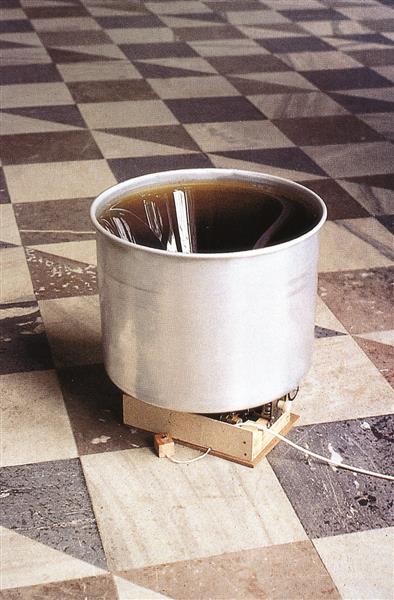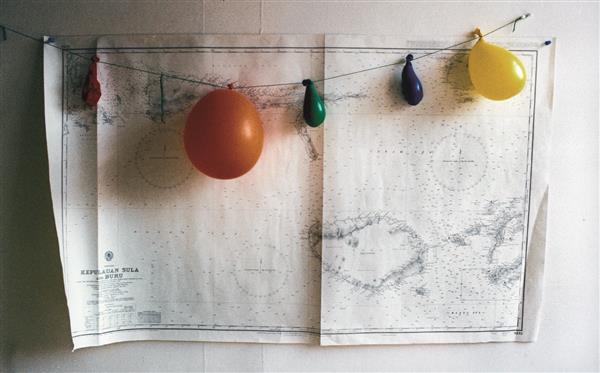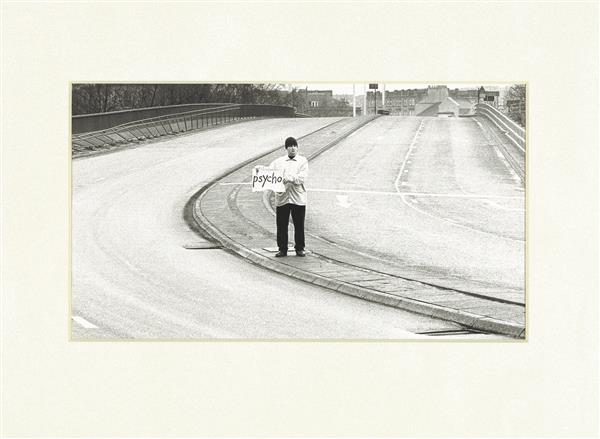How to Construct an Orange
Attila Csörgő
Lambda print on photographic paper
edition 2/5
90 × 130 cm (framed)
1993–2002
Acquisition 2006
Inv. No. 0154
“Kitchen Geometry” is the name Attila Csörgő uses for describing the peeling of a spherical piece of fruit.1 The spiral thus produced illustrates the transformation of a body into a surface. The amalgamation of scientific phenomena and everyday objects is an approach commonly employed by the artist.2 In several works Csörgő addresses the theme of regular and irregular polyhedrons, for example. The thirteen Archimedean and the five Platonic solids are composed of polygons meeting in identical vertices. All of these solids, bearing such telling names as “truncated tetrahedron,” “truncated icosidodecahedron,” or “hexahedron,” coincide with the surface of a circumscribed sphere that surrounds them. Attila Csörgő is interested in the construction of this spherical shape and how it dissolves within surface and space.
The photograph owned by the evn collection, entitled How to Construct an Orange, forms part of an installation consisting of nine paper polyhedrons and just as many vertically aligned electric fans. The air distributed by the fans causes the paper bodies to dance in space. The impression of weightlessness is created with the simplest technological means, and the shapes in the exhibition room turn into celestial bodies floating in the universe. One of the artist’s starting points for this work was the combination of two- and three-dimensional geometry, a seemingly impossible undertaking. A pencil drawing that is part of the installation demonstrates the complicated transformation of an ornament (a spiral) into a sphere. Shapes develop from the spiraling orange peel, evolving from the two-dimensional surface into a spatial dimension. The photograph shows a close-up view of one of the bodies realized within the project. Through the diffuse background, a view of a different cosmos opens up and fires the beholder’s imagination through the momentary glimpse of an installation.
Heike Maier-Rieper, 2011 (translation: Wolfgang Astelbauer)
1) Gregor Podnar and Kati Simon (eds.), Attila Csörgö. Archimedean Point, Ludwig Museum et al., Gurgur Editions, Budapest 2010, 88.
2) This approach can also be observed in The Maelström Project (1995), which is also preserved in the evn collection. Rotating motor oil appears in ever-new reflections.
Continue readingPublications
evn collection. 2006–2011, Cologne 2011, p. 90–93
Attila Csörgő: Archimedean Point, Ljubljana 2010, p. 72


